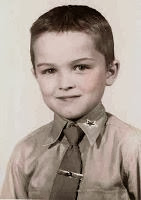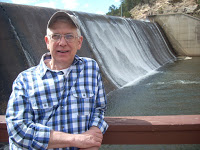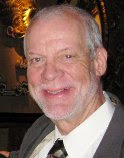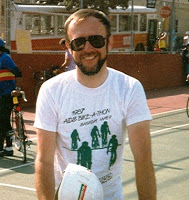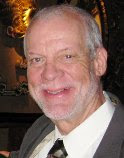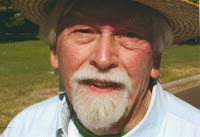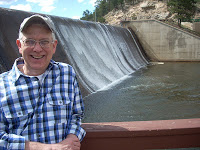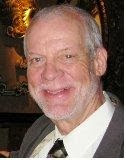I like music. I like music from before the 30’s, 40’s, 50’s, and 60’s. I like certain pieces of popular music after the 50’s. I haven’t heard any thing DJ’s play from the 90’s and beyond that sounds like music; all I hear is yelling, screeching, and eardrum shattering noise. I recently learned to appreciate opera although I’ve enjoyed classical and Baroque music for decades. I’ve always enjoyed many types of music from my earliest days; here’s why.
When I was about 3 or 4 years old living in Redondo Beach, CA (a bedroom community west of Los Angeles), my parents bought me my own record-player for children. It was about 10-inches wide by 8-inches long, 6-inches tall with the lid closed, and weighed about 7 pounds. The lid was white and the base was bright red. The player only played 78’s. My parents also supplied me with 18 double-sided children size records, thus giving me 36 songs or stories to listen to and sing the songs while the record was playing.
While visiting my brother and sister at Lake Tahoe this past summer, I found my old record album containing a few of my childhood records. I am passing it around so you not only can see the music that started my enjoyment but also to perhaps stimulate some “ancient” memories of your childhood. I had not seen these in over 55-years so it was quite a memory shock to see, hold, and listen to them all again scratchy and juvenile as they are. Many happy hours in that album.
At the age of 5 my parents enrolled me in accordion lessons. They even got me a “loaner” child size accordion and later bought me a much larger adolescent size one. I chose to play the accordion because of watching Myron Florin play one every week on the Lawrence Welk TV show. Naturally, I had to learn to read music but my inherent laziness kicked in and I found all available opportunities not to practice. I had to be fairly sneaky about not practicing because getting caught always resulted in a spanking. I guess my parents didn’t like the idea of paying for lessons that were not being productive enough; how perfectly parental that was.
At 6-years old I started 1st grade, attending the Hawthorne Christian School, I somehow ended up in a band class part of each day. They did not teach accordion there, so I switched to learning how to play the trumpet. The best I could do was making real musical type notes come out and not the amplified breathless “ppppppptttt” sounds that novice beginners make. The accordion had actual keys, one for each note, while the trumpet had three valves that had to be open or closed in cahoots with one another to make the proper note. I never did really get the hang of it so I was very grateful when the trumpet had to be returned to its rightful owner.
When I was seven, the first song by the Chipmunks came out and soon thereafter (or maybe before) came Andy Griffith’s, What It Was, Football and I learned I liked humorous songs and stories on the radio.
Only a few days before my 8th birthday, I was sent to live with my grandparents on their farm in central Minnesota. My musical preferences expanded as the birth of rock-n-roll previously had taken place. On the farm also lived my 3 ½ year older than me uncle. About 6-months after my arrival, he purchased and brought home a 45-rpm record with a song by Jimmie Rogers titled Honeycomb (my first rock song and I remember it to this day). Enamored by the song, I kept pestering my uncle to let me play it. I have no idea what song was on the flip side. Soon after, the DJ’s of the day began playing Johnny Horton’s Sink the Bismarck and The Battle of New Orleans and I was hooked on those styles of music.
In my school at Minnesota, 3rd and 4th grade classes had to (I mean got to) take music lessons. (We also got to recite the Pledge of Allegiance, which set me up for patriotism.) The whole class learned to play the Flute-a-Phone (now called a Recorder). We would practice different pieces of music and every year at Christmas time; all the classes sat together in the auditorium and at the appropriate place in the program, played the same piece of music, Flute-a-Phones on Parade. Do any of you remember the sound a recorder makes? A sort of high-pitched teakettle whistle which changes pitch according to which holes are covered or uncovered by the player. Back then, it sounded nice to me, but in recent performances, I have been to, it just sounded like wounded teakettles sounding off, each with a slightly different pitch and definitely without harmony, but I clapped and applauded anyway—not so much to reward the children, but because I was glad, it was finished. I guess the performance was a type of payback for what I put my grandparents through when I played.
The Christmas holiday period always filled the air and airwaves with beautiful carols and holiday music. The idea of receiving gifts of toys and other fun things (not clothes, socks, or underwear) made it easy to like the music that emphasized that Christmas Eve and day were near; using the same principle of “guilty by association”, Christmas holiday is good therefore holiday music is good. I was in a restaurant last Friday night and I began to tear-up and had a warm-fuzzy feeling all over when two of my favorite carols began to play; one was Oh Holy Night and I do not recall the other.
When the school would allow boys and girls out an hour early, IF they were going to sing in the local Lutheran Church’s Christmas Pageant, I went to sing there. That’s were I really learned to like Christmas songs. Of course, I already knew Frosty the Snowman and Rudolph the Red-nose Reindeer and Jingle Bells, but they were not the songs on the program, so I fell in love with all the religious carols. During practice sessions though, we were allowed to sing the fun songs they just were not on the program.
Just as I turned 10, my mother and new stepfather came to Minnesota and retrieved me. We went to live in California at South Lake Tahoe. Because I spent the majority of my time babysitting my brother and sister, I increased my reading of books to soften the boredom. Once I found my mother’s record collection, and had some spending money to buy my own albums, my taste in music further expanded. My mother had a multiple record Nat King Cole album and a multiple record Bing Crosby album of Christmas songs; both were 78-rpm “platters.” My favorite was White Christmas, the song that nearly did not get sung in the movie Holiday Inn because the producers did not think it worthy but, they needed a little “filler” so, in it went and the rest is history. That particular song by Bing always brings tears to my eyes now as I look back across the years into my past.
When not reading books and magazines or playing outside with my siblings, I would be playing music. Mother had some classical stuff I liked to listen to because it was so beautiful, melodic, and organized. I also bought Vaughn Meader’s First Family albums, both 1 and 2. Other favorites were Johnny Horton’s greatest hits album and my patriotic nirvana music; an album of John Phillip Sousa marches of which Stars and Stripes Forever is my favorite. If you ever see me playing it, you would also see me conducting it, even if I am walking down the street listening to it on my iPod. More albums I had: The Planets, The Nutcracker, Pictures at an Exhibition, Goldfinger, Thunderball, Songs of the North & South, The War of 1812, Handel’s Messiah, and one with the overture to William Tell.
Living at Lake Tahoe kept me in a sheltered environment musically speaking. The one radio station only played non-rock-n-roll music; show tunes from performers at the casinos, or movie soundtracks, or music by Bing Crosby, Pat Boone, Doris Day, Dean Martin, and the like; so, no Beatles music for me. My wife grew up a military brat so she was in love with Beatles music and owned all of their albums. I only learned to enjoy and like a limited number of their songs after we married AND as music deteriorated into the present cacophony of noise. I still like certain pieces beyond the 50’s like the long version of Inna-Gadda-da-Vida and nearly all of the Beach Boys with Johnny Cash, Marty Robbins, The Righteous Brothers, and Simon & Garfunkel thrown into the mix.
As time progressed and music deteriorated, I realized that much of the 60’s and 70’s music I hated began to sound pretty good after all. In any case, that is how and why I ended up enjoying music of different types and quality.
© 16 May 2012
About the Author
I was born in June of 1948 in Los Angeles, living first in Lawndale and then in Redondo Beach. Just prior to turning 8 years old in 1956, I began living with my grandparents on their farm in Isanti County, Minnesota for two years during which time my parents divorced.
When united with my mother and stepfather two years later in 1958, I lived first at Emerald Bay and then at South Lake Tahoe, California, graduating from South Tahoe High School in 1966. After three tours of duty with the Air Force, I moved to Denver, Colorado where I lived with my wife and four children until her passing away from complications of breast cancer four days after the 9-11 terrorist attack.
I came out as a gay man in the summer of 2010. I find writing these memories to be therapeutic.
My story blog is TheTahoeBoy.Blogspot.com
